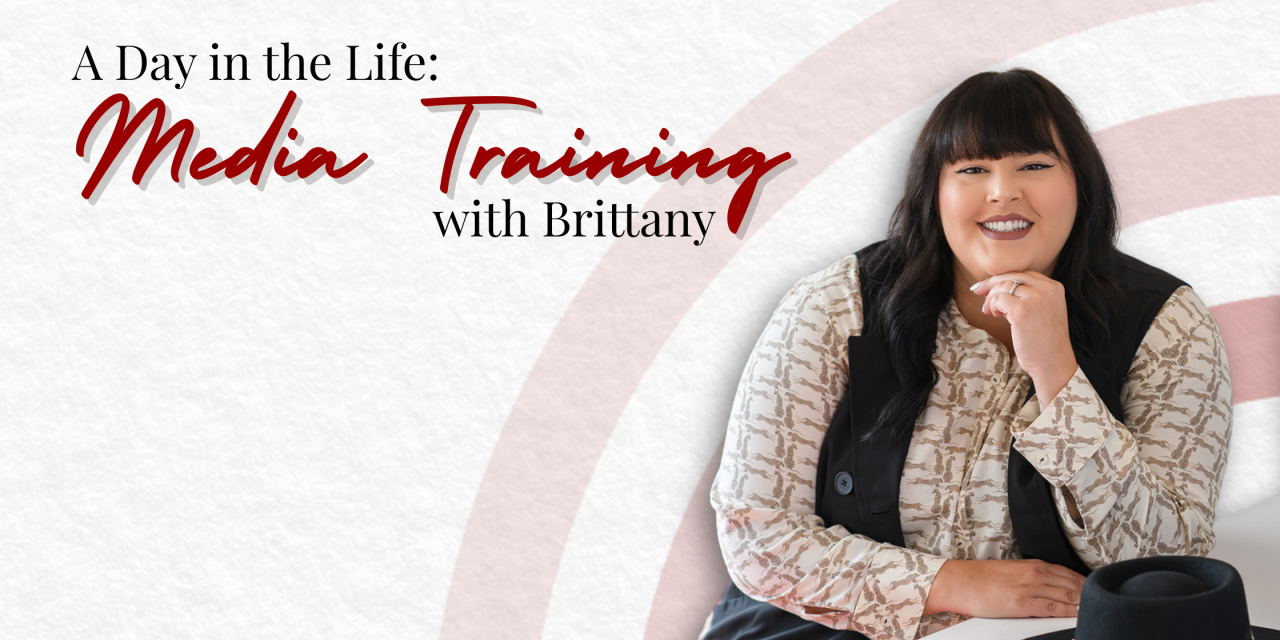“Sometimes I’ll start a sentence, and I don’t even know where it’s going. I just hope I find it along the way.”
— Michael Scott, The Office
It’s a funny line from a sitcom, but in the real world, especially when facing the media, that approach is a gamble you can’t afford to take. For professionals and organizations, finding the right words, delivering a clear message and doing so with confidence can make or break a reputation. This is where media training comes in.
At Durrell Communications, Brittany Bortolon, our Media Manager, is often on the front lines of these sessions, guiding clients as they prepare to face journalists, stakeholders, and the public. We sat down with Brittany to get a glimpse into the world of media training and why it is such a vital part of our work as a Public Relations agency.
Why Media Training Matters
We’ve all seen how fast a story can gain traction and how quickly things can spiral when a spokesperson isn’t prepared. Whether it’s a misstep during an interview or an offhand comment caught on camera, the consequences can be immediate and widespread.
“Media training is really about preparation and confidence. News cycles today move quickly, and stories can spread instantly online,” Brittany shares.
In a fast-paced, high-stakes media landscape, the difference between a nosedive and a brief moment of turbulence often comes down to whether or not someone has been trained to respond, not react.
Journalists may just be doing their jobs, but the questions they ask can be tough, designed to dig deep, throw you off, or push you out of your comfort zone, causing some of the most seasoned leaders to falter under pressure. That’s when even the best intentions can unravel.
“Training gives people the tools to handle the tough questions, stay on message, and represent themselves or their organization in a way that builds credibility and trust,” Brittany reveals. With the right training, a moment of survival could become an opportunity to take control and further amplify your mission, message, and values.
Where Media Training Shows Up
Many think that media interviews are the most common use of media training moments. But Brittany emphasizes that media training goes far beyond that. She’s supported clients preparing for press conferences, panel appearances, investor preparations, stakeholder meetings, and even internal townhalls.
“Media training is helpful any time you’re in a position to speak on behalf of your organization,” and for CEOs or individuals in a position of leadership, this could be an everyday occurrence.
Even though many don’t like to think about a crisis happening to them, the truth is, it’s not a matter of if, but when. Crises happen to all of us; the real question is, how prepared will you be when they do? Media training is the optimal way to not only be reactive but also proactive during crises, allowing organizations to “respond quickly when they can’t afford to misspeak,” Brittany shares.
A Day In The Life of A Media Trainer
According to Brittany, a typical media training session is a mix of learning and practice. It begins with an overview of how the media operates and what journalists are looking for, helping individuals or groups gain a foundational understanding of the media landscape. Then, the session focus shifts into developing specified key messages and defining what you want your audience to walk away remembering.
“From there, we practice interviews so participants can learn how to handle real-world scenarios,” Brittany explains. Each session is designed to be interactive and customized to the participants and their organization, so while a similar framework may be followed each time, every media training is a little different.
Starting broad and informative, Durrell Communications’ media training sessions gradually move into the finer details. Participants are immersed in realistic mock scenarios that challenge and encourage them to apply their knowledge, background, and organizational values, equipping them to communicate with clarity and confidence.
The Cost of Going In Unprepared
Brittany urges that one of the biggest mistakes one can make “is trying to ‘wing it.’” Without a clear goal, key message, or solid understanding of the topic, it’s easy to go off track, overshare, or fall back on jargon that doesn’t resonate with the audience.
Ultimately, media training is all about preparation. When someone is well-prepared, they act, look and sound like it, speaking with clarity, exuding confidence, and moving with purpose.
Preparation is nearly impossible to fake; it ensures that responses are focused and intentional, so you’re not scrambling mid-sentence to find your point to articulate your message.
The Most Versatile Tool In Your Kit
While media training can provide direction and success within boardrooms, in newsrooms, during speaking engagements, and even in company meetings, “The skills you build through media training, like staying calm under pressure and delivering clear, memorable messages, carry over into so many other areas,” Brittany points out.
It can make an individual a more confident speaker, provide more effective day-to-day communication with colleagues, clients, stakeholders, and even in their personal life. “At its core, media training is about effective communication, which is valuable in almost every profession,” Brittany says.
Amid the noise, in the chaos and pressure of it all, you can be a source of calm, confidence, and clarity — something the world could use more of these days. Communication is everything, and media training gives you the tools to show up prepared, speak with purpose, and turn every message into a moment that matters.
